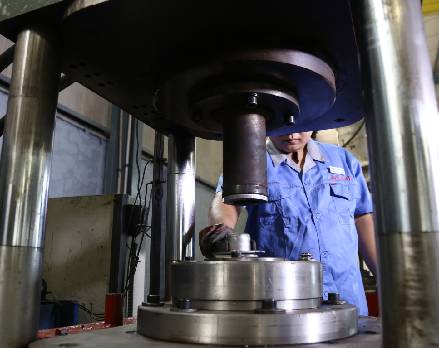 Afrikaans
Afrikaans  Albanian
Albanian  Amharic
Amharic  Arabic
Arabic  Armenian
Armenian  Azerbaijani
Azerbaijani  Basque
Basque  Belarusian
Belarusian  Bengali
Bengali  Bosnian
Bosnian  Bulgarian
Bulgarian  Catalan
Catalan  Cebuano
Cebuano  Corsican
Corsican  Croatian
Croatian  Czech
Czech  Danish
Danish  Dutch
Dutch  English
English  Esperanto
Esperanto  Estonian
Estonian  Finnish
Finnish  French
French  Frisian
Frisian  Galician
Galician  Georgian
Georgian  German
German  Greek
Greek  Gujarati
Gujarati  Haitian Creole
Haitian Creole  hausa
hausa  hawaiian
hawaiian  Hebrew
Hebrew  Hindi
Hindi  Miao
Miao  Hungarian
Hungarian  Icelandic
Icelandic  igbo
igbo  Indonesian
Indonesian  irish
irish  Italian
Italian  Japanese
Japanese  Javanese
Javanese  Kannada
Kannada  kazakh
kazakh  Khmer
Khmer  Rwandese
Rwandese  Korean
Korean  Kurdish
Kurdish  Kyrgyz
Kyrgyz  Lao
Lao  Latin
Latin  Latvian
Latvian  Lithuanian
Lithuanian  Luxembourgish
Luxembourgish  Macedonian
Macedonian  Malgashi
Malgashi  Malay
Malay  Malayalam
Malayalam  Maltese
Maltese  Maori
Maori  Marathi
Marathi  Mongolian
Mongolian  Myanmar
Myanmar  Nepali
Nepali  Norwegian
Norwegian  Norwegian
Norwegian  Occitan
Occitan  Pashto
Pashto  Persian
Persian  Polish
Polish  Portuguese
Portuguese  Punjabi
Punjabi  Romanian
Romanian  Russian
Russian  Samoan
Samoan  Scottish Gaelic
Scottish Gaelic  Serbian
Serbian  Sesotho
Sesotho  Shona
Shona  Sindhi
Sindhi  Sinhala
Sinhala  Slovak
Slovak  Slovenian
Slovenian  Somali
Somali  Spanish
Spanish  Sundanese
Sundanese  Swahili
Swahili  Swedish
Swedish  Tagalog
Tagalog  Tajik
Tajik  Tamil
Tamil  Tatar
Tatar  Telugu
Telugu  Thai
Thai  Turkish
Turkish  Turkmen
Turkmen  Ukrainian
Ukrainian  Urdu
Urdu  Uighur
Uighur  Uzbek
Uzbek  Vietnamese
Vietnamese  Welsh
Welsh  Bantu
Bantu  Yiddish
Yiddish  Yoruba
Yoruba  Zulu
Zulu different types of conveyor rollers
Different Types of Conveyor Rollers
Conveyor rollers are essential components of conveyor systems, which facilitate the movement of goods and materials in various industries. These rollers play a crucial role in determining the efficiency and effectiveness of the entire conveyor system. Depending on the application and specific requirements, conveyor rollers come in various types. Understanding the different types of conveyor rollers can help businesses optimize their material handling processes.
1. Standard Rollers
Standard rollers are the most common type of conveyor rollers. They are typically made of steel or plastic and are used in a variety of applications. These rollers have a smooth surface that allows for easy movement of goods. Standard rollers can be used in both gravity and powered conveyor systems. They can be customized in terms of size, diameter, and length according to the specific needs of the conveyor system.
2. Heavy-Duty Rollers
Heavy-duty rollers are designed to handle heavier loads and more demanding applications. They are usually constructed from robust materials such as heavy-gauge steel or reinforced plastic. These rollers are built to withstand the stresses of heavy materials and can operate in harsh environments. Heavy-duty rollers typically feature larger diameters and thicker walls to enhance their durability and load-bearing capacity.
Gravity rollers rely on gravity for the movement of goods. They are typically installed at an incline, allowing products to roll down from one end to another. This type of roller is commonly used in assembly lines and packaging areas where manual movement of items is required. Gravity rollers are lightweight, easy to install, and cost-effective, making them ideal for many applications.
different types of conveyor rollers

4. Powered Rollers
Unlike gravity rollers, powered rollers require a motor to facilitate movement. These rollers are often used in automated systems where precise control over the movement of goods is required. Powered rollers can be integrated with sensors and control systems to enhance their functionality. They are commonly found in warehouses and distribution centers, where fast and efficient material handling is critical.
5. Idler Rollers
Idler rollers are non-powered rollers that support the conveyor belt and assist in guiding it. They are pivotal in maintaining belt tension and alignment, and they help distribute the load evenly across the conveyor system. Idler rollers can be found in various configurations, including flat, crowned, or tapered designs, depending on the specific requirements of the application.
6. Specialty Rollers
Specialty rollers cater to unique application needs. These can include rollers designed for specific industries, such as food processing, where hygiene standards are paramount. Specialty rollers can be made from food-grade materials and are often easy to clean. Other examples include rollers designed for extreme temperatures or for handling delicate materials that need careful handling to avoid damage.
Conclusion
Selecting the right type of conveyor roller is critical for ensuring the efficient operation of material handling systems. With a diverse range of options available, businesses can choose rollers that best fit their specific needs — whether they require heavy-duty rollers for robust applications or lightweight gravity rollers for simple material transfer. Understanding the properties and applications of each type helps in optimizing the entire conveyor system, leading to enhanced productivity and reduced operational costs. As industries continue to evolve, the role of conveyor rollers remains pivotal, contributing to the advancement of efficient material handling solutions.
-
Revolutionizing Conveyor Reliability with Advanced Rubber Lagging PulleysNewsJul.22,2025
-
Powering Precision and Durability with Expert Manufacturers of Conveyor ComponentsNewsJul.22,2025
-
Optimizing Conveyor Systems with Advanced Conveyor AccessoriesNewsJul.22,2025
-
Maximize Conveyor Efficiency with Quality Conveyor Idler PulleysNewsJul.22,2025
-
Future-Proof Your Conveyor System with High-Performance Polyurethane RollerNewsJul.22,2025
-
Driving Efficiency Forward with Quality Idlers and RollersNewsJul.22,2025





























